Without her glorious landmarks, Paris would not be Paris!
What attracts many of us to Paris is often the fashion, food, and wine, or maybe a stroll down a cobbled street, or even a boat ride on the Seine.
However, to understand the French culture and its history, learning unique details about the landmarks of Paris provides a far better insight into the French people and their complicated past.
After all, we all know the Eiffel Tower, but can you name all landmarks in Paris?
Whether this is your first visit to Paris or you know the city well, Parisian landmarks reveal new facts each time we visit.
So on your next trip, choose a few notable landmarks, and spend some time appreciating the architecture, their stories, and their place in French history. You will seriously be impressed!
Looking for accommodation? It can be overwhelming to research online so we went ahead and wrote a handy guide on where to stay in Paris.
Landmarks in Paris
Eiffel Tower
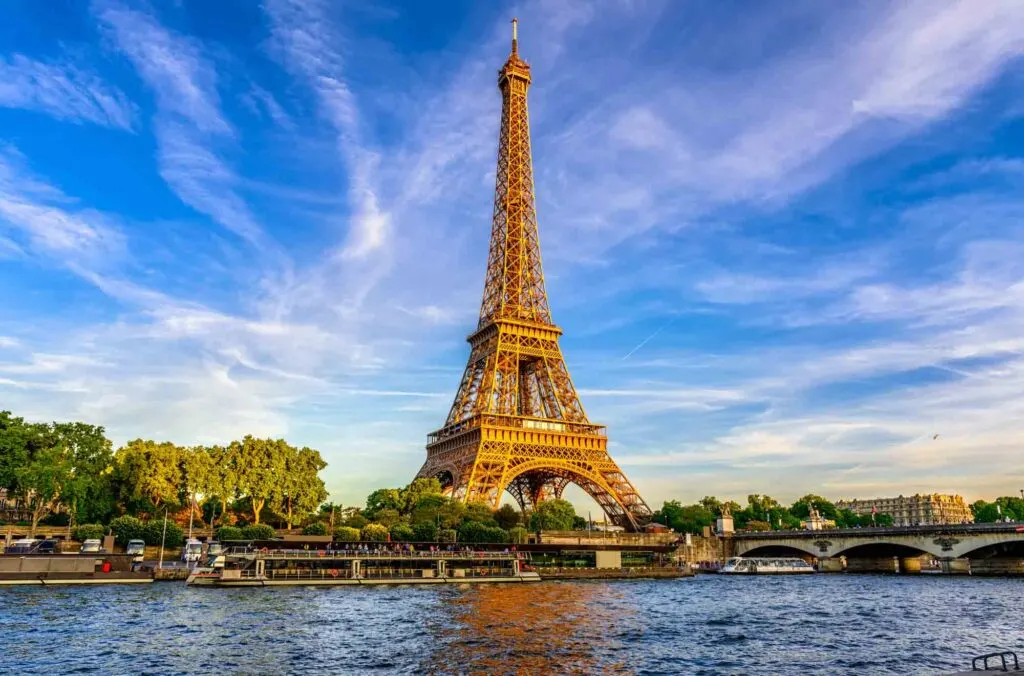
We have all seen photos of Gustave Eiffel’s famous landmark, but to see the Eiffel Tower, this Art Nouveau structure, up close and in person, is always an awe-inspiring moment.
Located on the Champs de Mars, the Eiffel Tower is absolutely worth visiting, notwithstanding the crowds.
Built as a temporary tower in 1889, in conjunction with the Exposition Universelle, the Eiffel Tower has since remained the icon of all things Paris.
There are many ways to experience the Eiffel Tower: whether for ice skating on the first floor (from December-January); a meal at one of the two famous restaurants; or a panoramic view from the top (included in the Paris Pass); each visit will offer a unique adventure.
Want to avoid the crowds? Afraid of heights? Set up a picnic just below, in the expansive Champs de Mars gardens, where you can appreciate the magnitude of the Eiffel Tower while enjoying a glass of wine.
And don’t forget, the Eiffel Tower shimmers with sparkling lights every night, on the hour.
Pssst: Get here your skip-the-line tickets to the Eiffel Tower!
Cathedral Notre-Dame de Paris
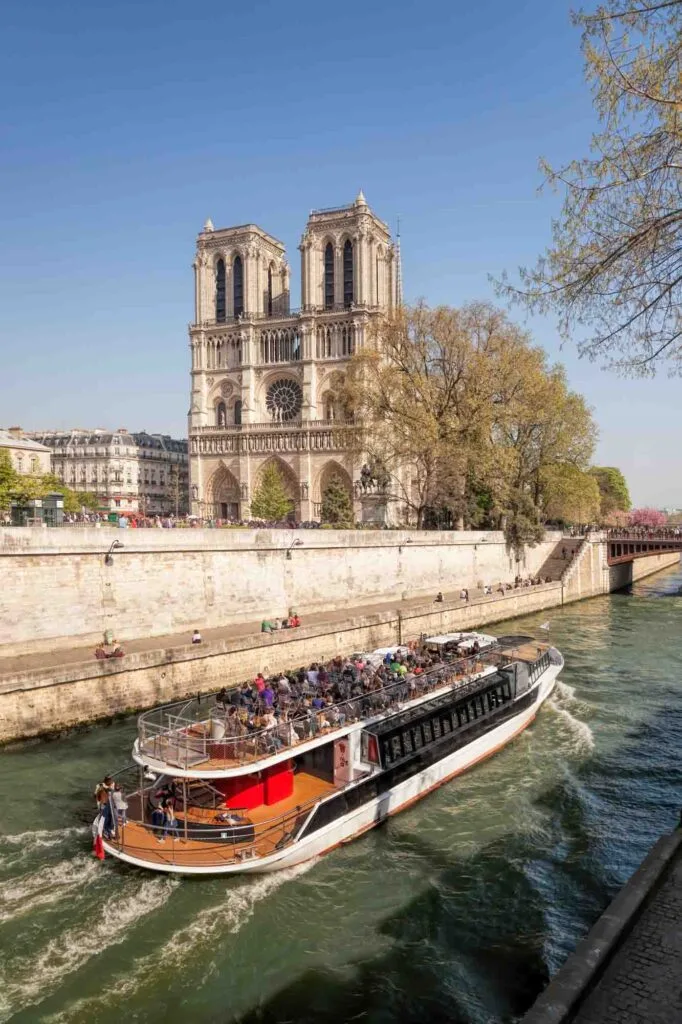
Located on the Île de la Cité in the 4th arrondissement, Notre Dame Cathedral is one of the most celebrated cathedrals in the world.
While the impressive interior nave, vaulted ceilings, and stained glass rose windows continue to inspire, the French gothic exterior of this landmark of Paris provides clues to the spirituality and history of the time.
Having survived many difficult moments in French history – even as recently as 2019, when a fire threatened destruction, the Notre-Dame Cathedral remains standing proudly at the island’s center.
An excellent example of gothic architecture with its gargoyles, flying buttresses, and stained glass windows, we still have the opportunity to appreciate the cathedral’s exterior while reparations continue.
Soon the bells that announced the Liberation of Paris at the end of WW2 will sound again, and we will all be able to climb to the top of the spires at the Notre-Dame de Paris for a most spectacular view of the city.
In the meantime, you can take in the beauty of this gothic cathedral from Place Jean-Paul II.
Read next: 4 Days in Paris
Hôtel des Invalides
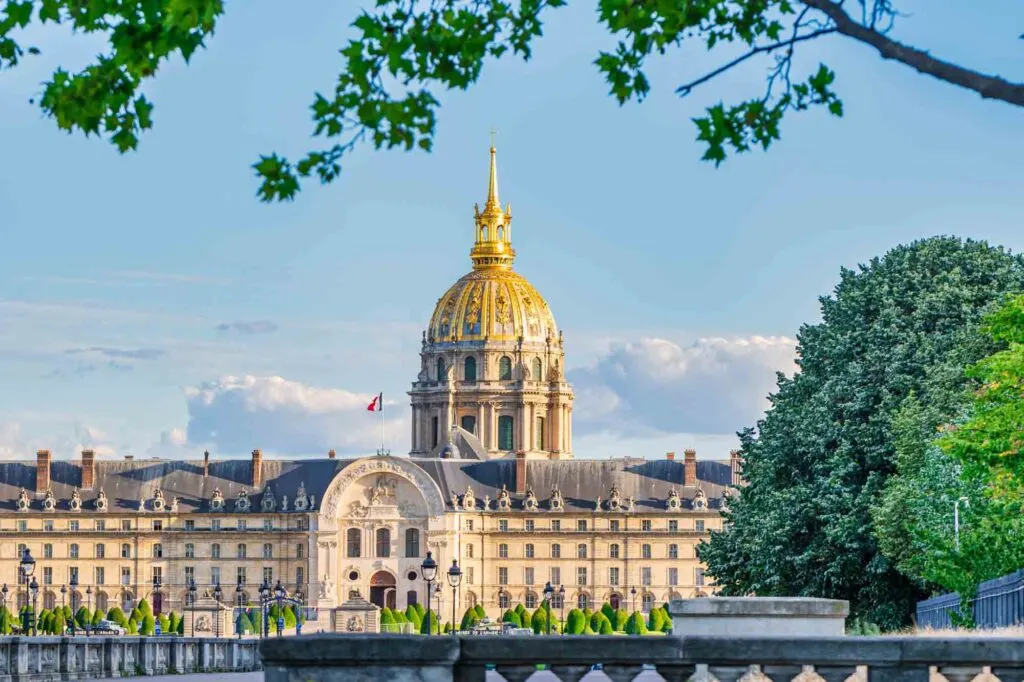
Located in the 7th arrondissement, Mansart’s golden Dôme–the royal chapel for Louis XIV– draws visitors to this important Paris landmark – a symbol of France’s absolute monarchy.
The Invalides, initiated by Louis XIV and completed in 1676, was initially designed to house wounded soldiers.
Today, the Invalides continues to provide care for wounded veterans and features the Musée de l’Armée, a chapel, and most importantly, the tomb of Napoleon Bonaparte.
However, the best way to learn about the Invalides, and Napoleon’s participation, is to attend a spectacular Sound and Light show, “La Nuit Aux Invalides,” during July and August.
Arc de Triomphe
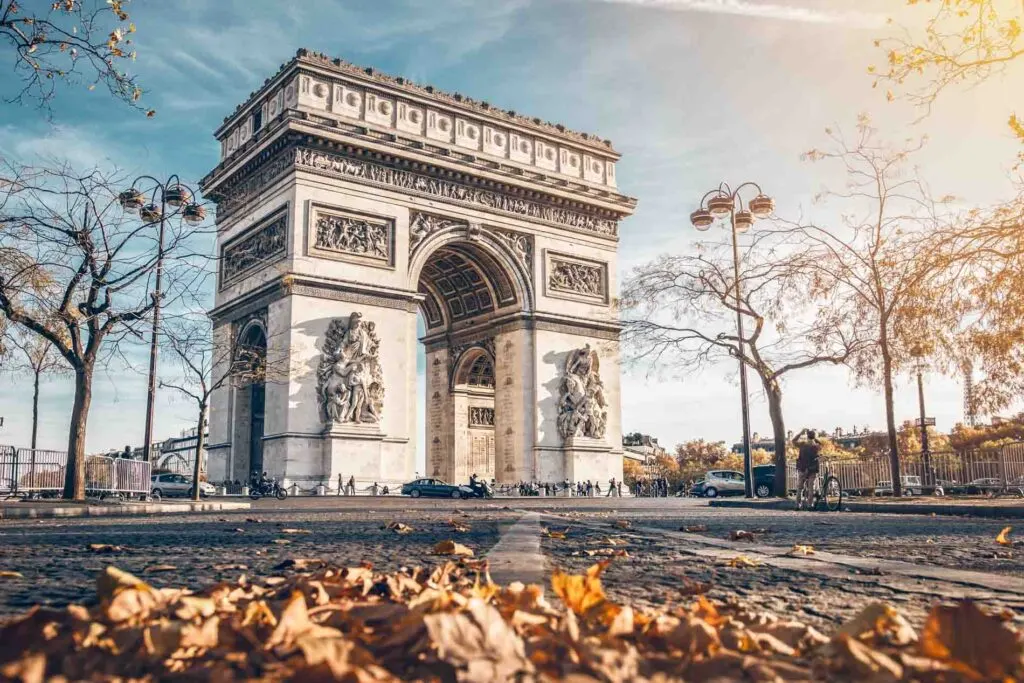
The Arc de Triomphe, located in the Place Charles de Gaulle, is one of the most famous landmarks in Paris.
Initially commissioned by Napoleon to commemorate the military triumph at Austerlitz, today, this triumphal arch continues to protect the eternal flame and tomb of the unknown soldier.
Designed by Chalgrin in the Neoclassical style, the sculptures, reliefs, and engravings, represent patriotic messages of Triumph, Resistance, and Peace, as well as specific military successes.
Take a stroll around the exterior to appreciate France’s military history through its architecture. Then take the lift to the top to check out the Avenue des Champs Elysées (with its bright window displays from Louis Vuitton and Guerlain)- and all of Paris.
Basilica of Sacré-Coeur
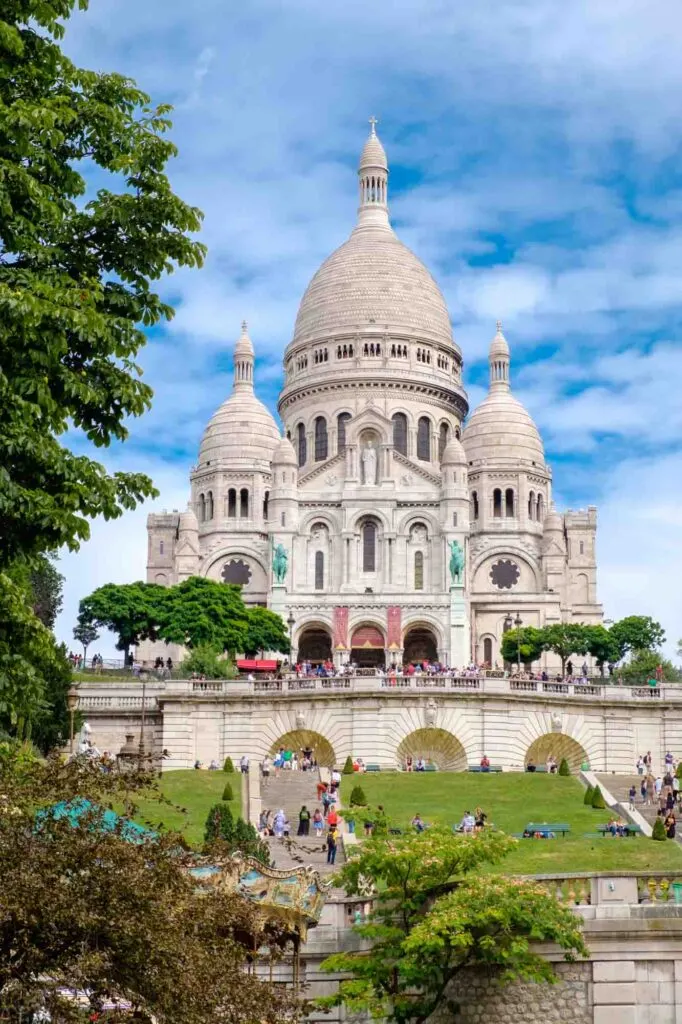
Located at the apex of the artist community of Montmartre in the 18th arrondissement, the Basilica of Sacré-Coeur is another iconic Parisian landmark.
Completed in 1910 and constructed with white travertine stone, it represents the Romano-Byzantine style.
Unlike most French churches dedicated to Mary, the Sacré-Coeur pays homage to Jesus’ Sacred Heart and has often been the starting point for many pilgrimages.
Influenced by San Sofia in Istanbul and San Marco in Venice, this shimmering, white landmark is dominated by its massive dome.
Inside, France’s devotion to Jesus is represented in the awe-inspiring mosaic, Christ in Majesty.
A climb to the top of the dome and belfry will reveal incredible views of Paris – from the highest point in the city!
Sainte-Chapelle
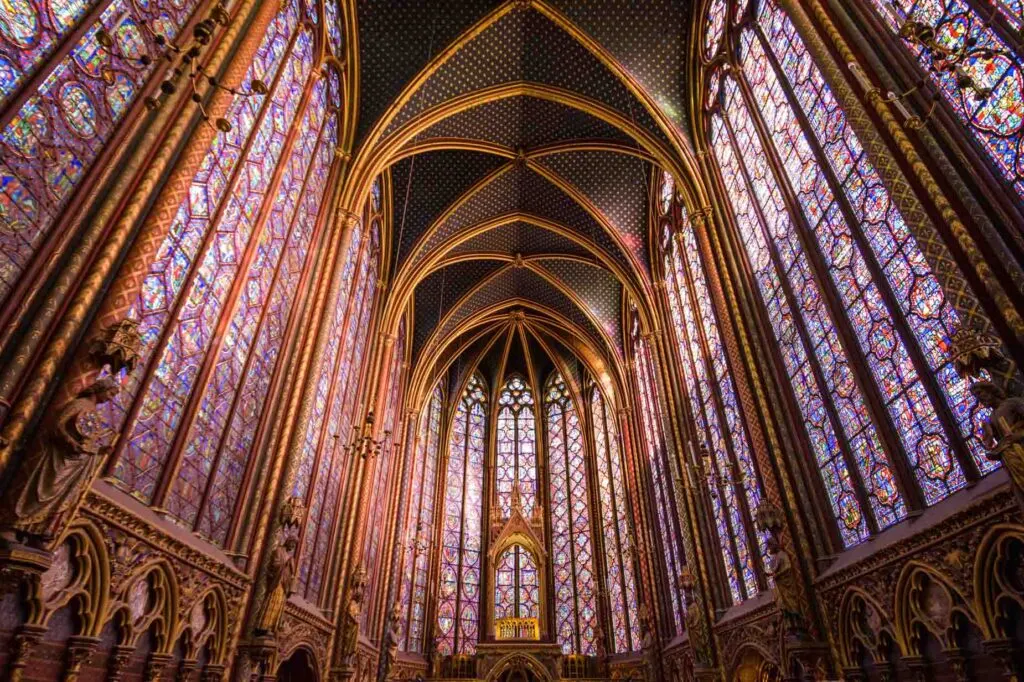
When visiting the Île de la Cité, we often focus more on Notre Dame, not realizing that a small, gothic, French jewel is just a few steps away.
The exquisite Sainte-Chapelle was constructed in the 13th century by Louis IX, who wanted a special place to house his relics from the Passion of Christ – including the Crown of Thorns.
These relics have since been moved, but the lofty, color-rich stained glass windows exhibiting biblical stories from the Old and New Testaments are the reason to visit.
Without a doubt, this tiny landmark of Paris will take your breath away. And if you have time, try to attend an evening concert.
The spiritual music, resonating through soaring, gothic arches, and colored windows, will be an experience of a lifetime!
Read next: Best Day Trips from Paris
Place de la Concorde
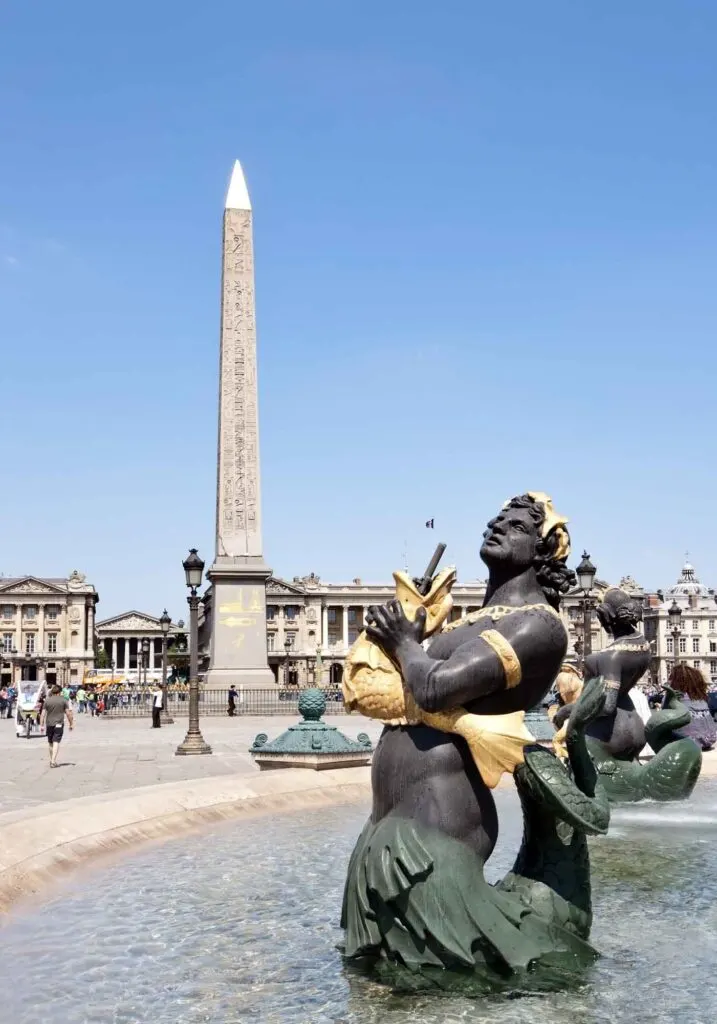
At the far opposite end of the Avenue des Champs Élysées, facing the Arc de Triomphe, stands the tall Egyptian Obélisque within the largest square in Paris – the Place de la Concorde.
This 3,300-year-old monument in the 8th arrondissement was a gift from the Khedive of Egypt in 1836 – one of a pair meant to stand at the entrance of the Temple of Ramses II in Luxor.
There are two, massive, bronze fountains on either side of the Obélisque, the “Fontaine des Mers” and the “Fontaine des Fleuves”.
Although this site was formerly used as a place of execution during the French Revolution, today, it represents the gateway to the Tuileries Gardens and Musée du Louvre.
Adjacent to the Place de la Concorde are the famous Hotel Crillon and the Embassy of the United States.
Museé du Louvre
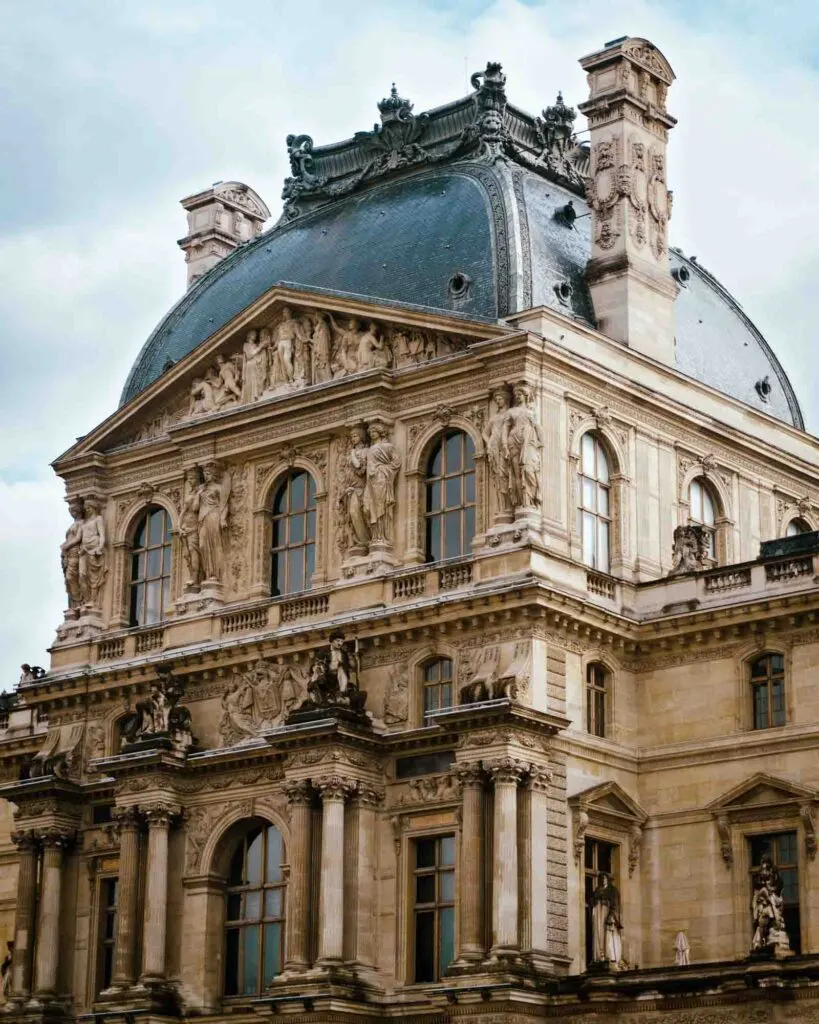
For any trip to Paris, the Louvre in the 1st arrondissement is a must-experience-landmark, with its more than 35,000 exhibited artworks, including many European masterpieces from the 15th to 19th centuries!
Originally constructed as a fortress in the 12th century, it was redesigned in the 16th century to become a royal palace.
After Louis XIV moved his residence to Versailles, the Louvre became a place for academic exhibitions and subsequently evolved into today’s museum.
We all know about the Mona Lisa, the grand hall of French history paintings, and the two impressive female sculptures flanking the entrances.
However, if you wander into the lesser popular galleries of Egyptian, Greek, and Etruscan Antiquities, you will avoid crowds and see equally impressive, permanent collections.
The Classic French architecture of the museum shockingly contrasts with the glass and steel I.M. Pei Pyramid, completed in 1993, which illuminates the entrance and shopping area.
For a very intimate and less-crowded experience at the Louvre, try to visit on Wednesday or Friday evenings.
You will be able to linger and absorb the artwork at your own pace. And for children…“Paris Muse” offers scavenger hunts, exposing them to the joy of art.
Museé d’Orsay
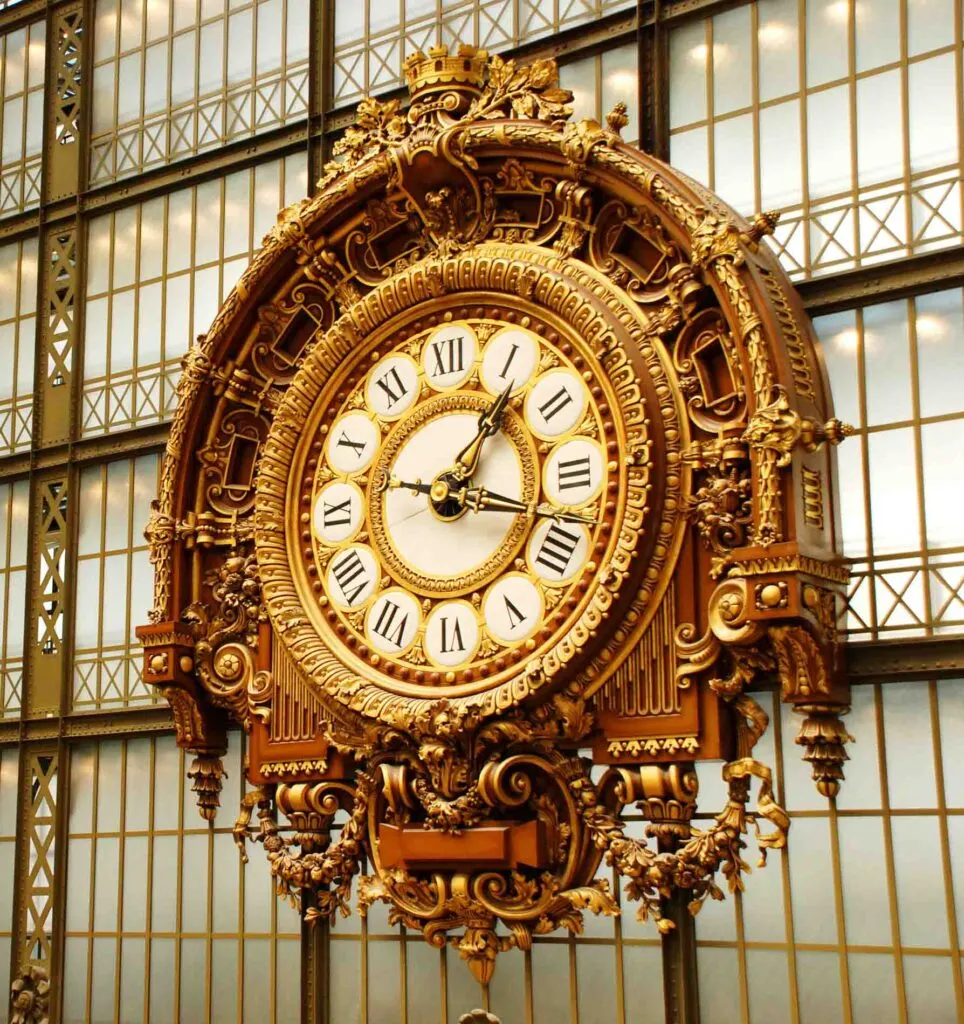
Another famous French landmark is the Musée d’Orsay, which occupies a former railway station originally built in 1900.
The lighting from the massive glass-arched ceiling provides the ideal location to exhibit their world-acclaimed Impressionist and post-Impressionist masterpieces.
The original train station clocks remain in place, while artists like Monet, Manet, Van Gogh, and Degas take prominence in the extensive galleries.
You will gain insight into the modern art movement and the people’s daily lives through many of the exhibited paintings.
To avoid the school groups and large crowds, a preferred time to visit is after 3:00 PM.
Centre Pompidou
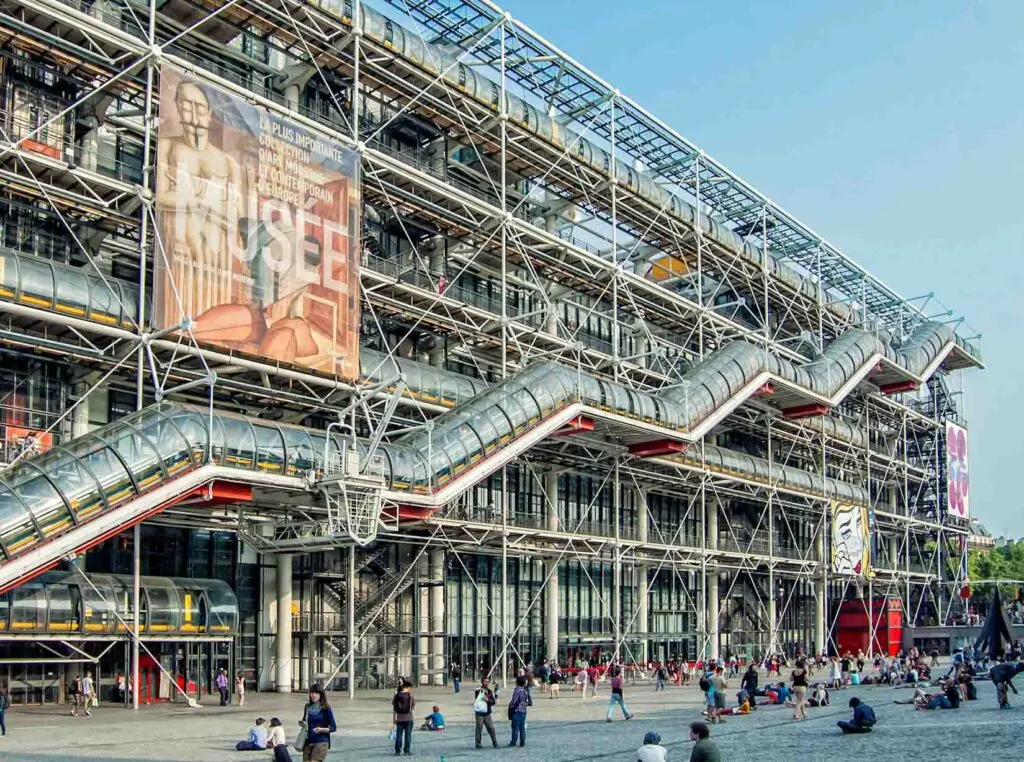
Officially called the Georges Pompidou National Art and Culture Centre, this contemporary art museum is one of the most recent entries to the list of Parisian landmarks.
This art center was the vision of the then president, who wanted Paris to regain prominence in the art world with a new, innovative space among historic buildings to exhibit the arts of the 20th and 21st centuries.
Architects Richard Rogers and Renzo Piano designed this very controversial building in the style of high-tech architecture, using glass and steel; exposed green, blue, and red pipes, stairs and escalators.
The Musée National d’Art Moderne is the main attraction housing one of the finest contemporary art collections in Europe.
Of equal importance is their extensive library, and there is a unique gallery designed just for children – so bring the kids!
Tour Saint-Jacques
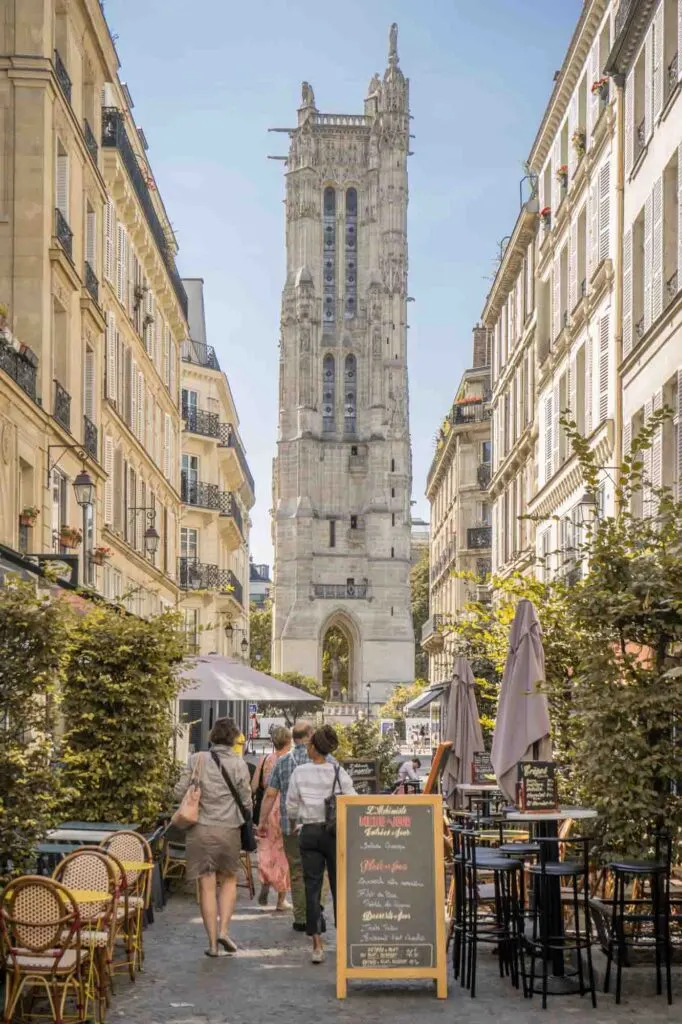
Originally the belfry of the former church, Saint-Jacques de la Boucherie, this remaining 16th century Paris landmark is a high example of the flamboyant gothic style of architecture.
Dedicated to Saint James the Greater, Saint-Jacques Tower is richly decorated with statues representing the four Apostles – Matthew, Mark, Luke, and John, and a depiction of Saint James, as well.
As a UNESCO World Heritage Site, this crucial religious bell tower and church served as the starting point for many pilgrimages to Santiago de Compostela in Spain. They represented the wealth of its patrons from the nearby businesses.
La Conciergerie
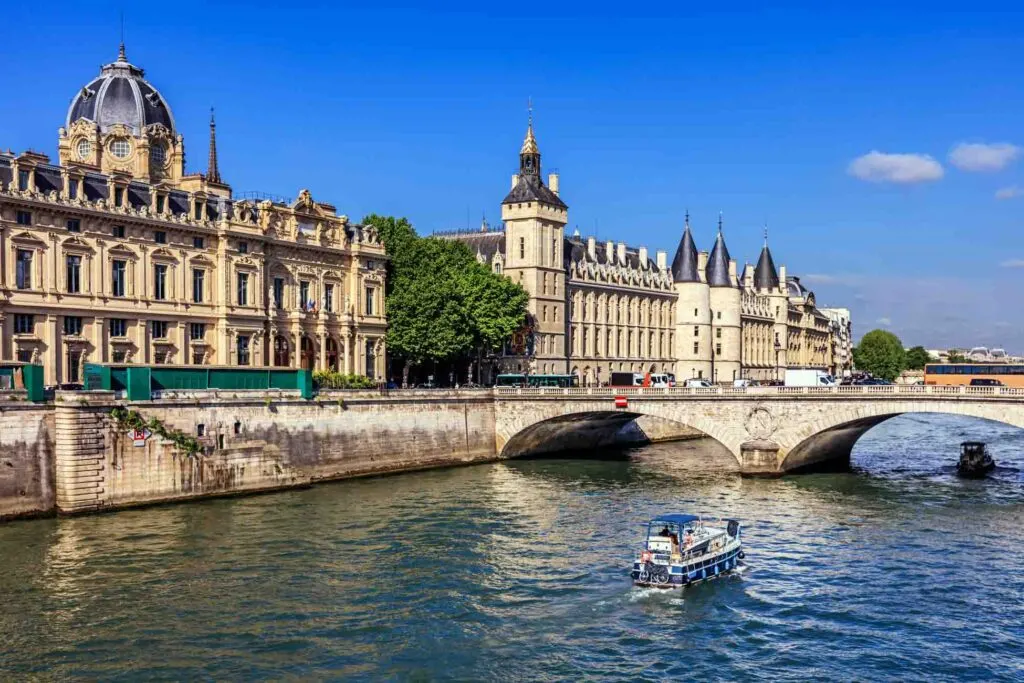
Built in 1370 as a medieval gothic palace in the Île de la Cité, the Conciergerie became a prison and antechamber to the Guillotine during the Revolutionary War – where Marie Antoinette was imprisoned.
The two major gothic halls, with their high vaulted ceilings and beautifully sculpted reliefs, “la Salle des Gardes” and “la Salle des Gens d’Armes,” are from the original medieval palace.
Today there is a commemorative chapel honoring Marie Antoinette as well as a prisoners gallery. Most notably, the Bonbec tower features the first public clock of Paris.
The Catacombes
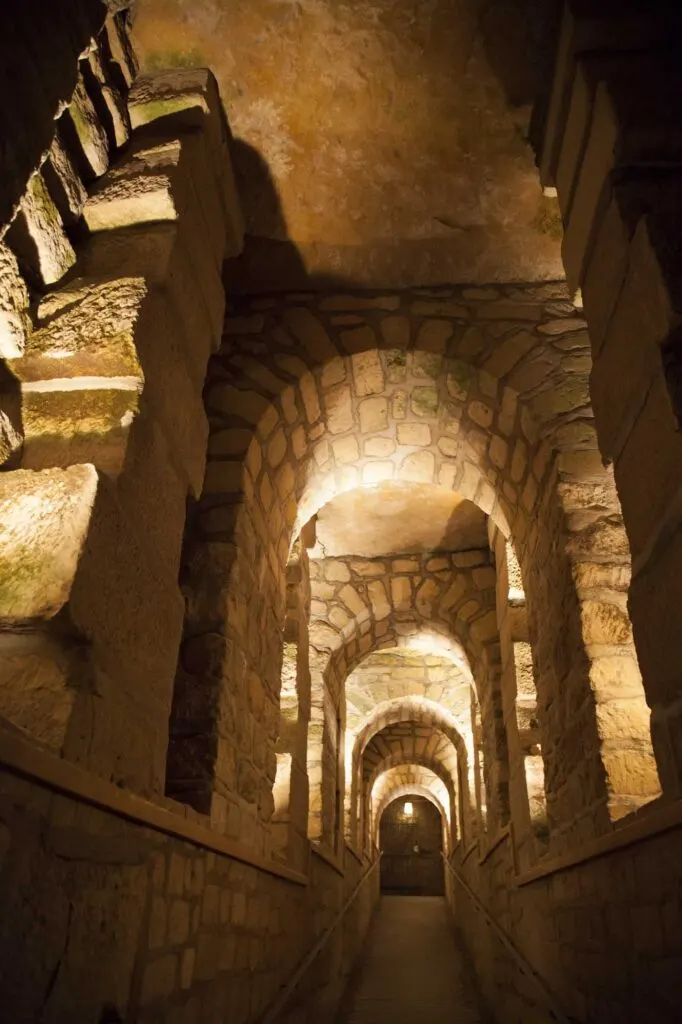
Arrête! C’est ici l’empire de la Mort (“Stop! This is the empire of Death”). These are the words that will greet you upon entering the Catacombes, located deep into the bowels of Paris.
People flock from around the world to experience this fascinating, morbid Ossuary in the 14th arrondissement exhibiting millions of bones and skulls from more than 6 million people who were deposited here in the 18th century as an overflow cemetery.
During WW2, the Catacombes became a hiding spot for members of the French Resistance.
In order to visit, be prepared to descend and climb many steps. While inside, check out the poems and meditative texts left behind, creating an eerie atmosphere—this is not a place for children, for sure!
Pont Alexandre III
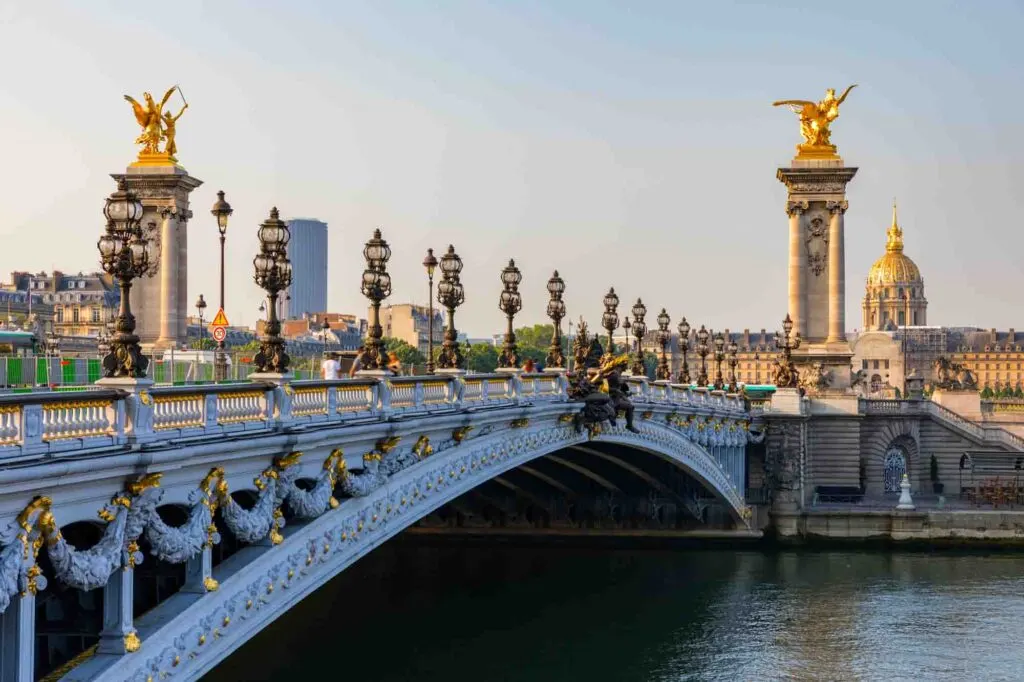
Wandering in Paris is one of the best pastimes, and there is no better place to stroll than across one of Paris’ most extraordinary landmarks – the Pont Alexandre III.
With its broad sidewalks, intricate Art Nouveau curves, and views of the Seine, this Parisian bridge is the place to enjoy a leisurely afternoon.
Built in 1900 for the Exposition Universelle, the Pont Alexandre III connects Les Invalides to the Avenue Des Champs Elysées and is truly an outdoor museum, with its ornate pillars and gilded allegorical sculptures.
At the time, the bridge showcased new French technology, which included using electric lights for the first time in Paris!
Honoring Tsar Alexandre III, who had formed an allegiance with France, the bridge symbolizes all that the new Industrial Revolution offered from 1871 to 1914.
Église Saint-Sulpice
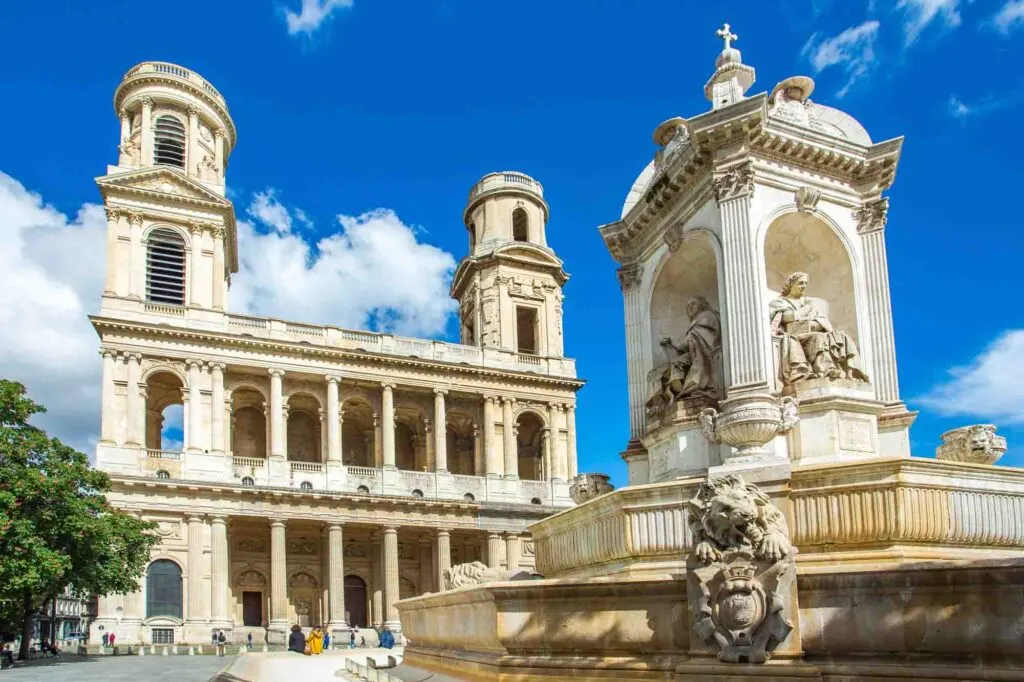
At the end of a narrow, winding street on the left bank in the 6th arrondissement, you will find the imposing, gothic Saint-Sulpice – the second largest church in Paris.
Begun in 1646, the church was not completed until 1870 – which explains the eclectic, baroque architecture and mismatched towers.
At the center of the square, in front of the church, you are met with a massive fountain, the Fontaine des Quatre Points Cardinaux, erected in 1844.
Inside you are overwhelmed by the famous Delacroix fresco, Jacob Wrestling with the Angel, as well as the famous organ.
Today, many visitors come to Saint-Sulpice precisely to follow the clues found in Dan Brown’s, The Da Vinci Code.
Palais du Luxembourg
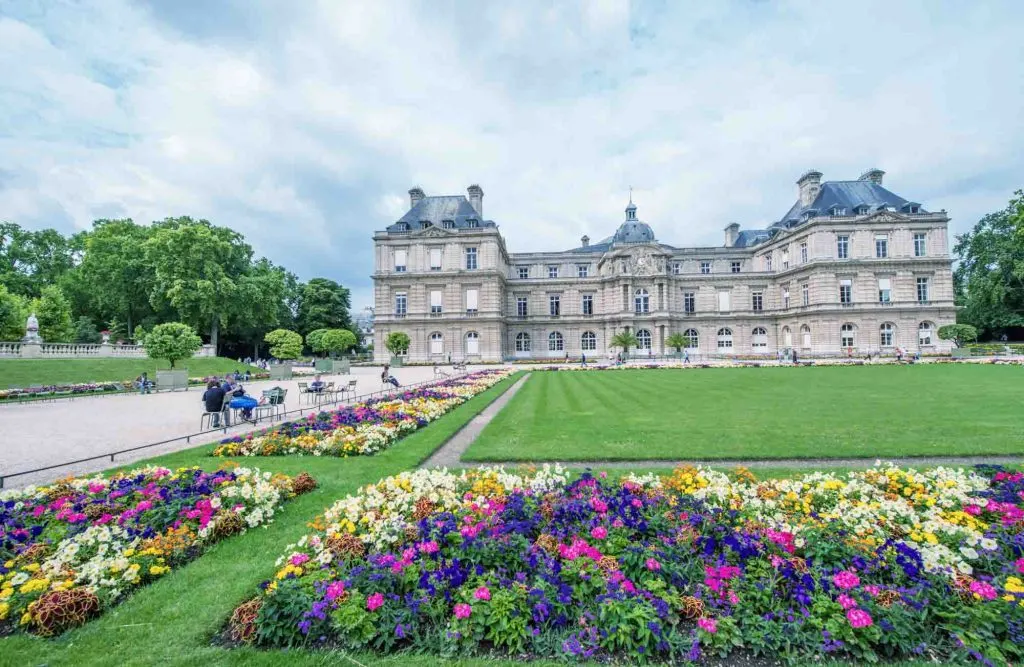
Not far from Saint-Sulpice, you will find the sprawling Luxembourg Gardens and the Palais du Luxembourg.
Built in the 17th century for Queen Marie de Medicis, this elegant Paris landmark was initially designed as a residence for the royal family before it became a prison during the French Revolution.
Then, under Napoleon, it became a government building and had subsequently become the home of the French Senate.
A neo-classical building in the Rocaille architectural style, the Pitti Palace in Florence and the surrounding Boboli gardens influenced the design.
With permission from a Senator, you can visit and view the incredible artwork of Delacroix in the dome.
Panthéon
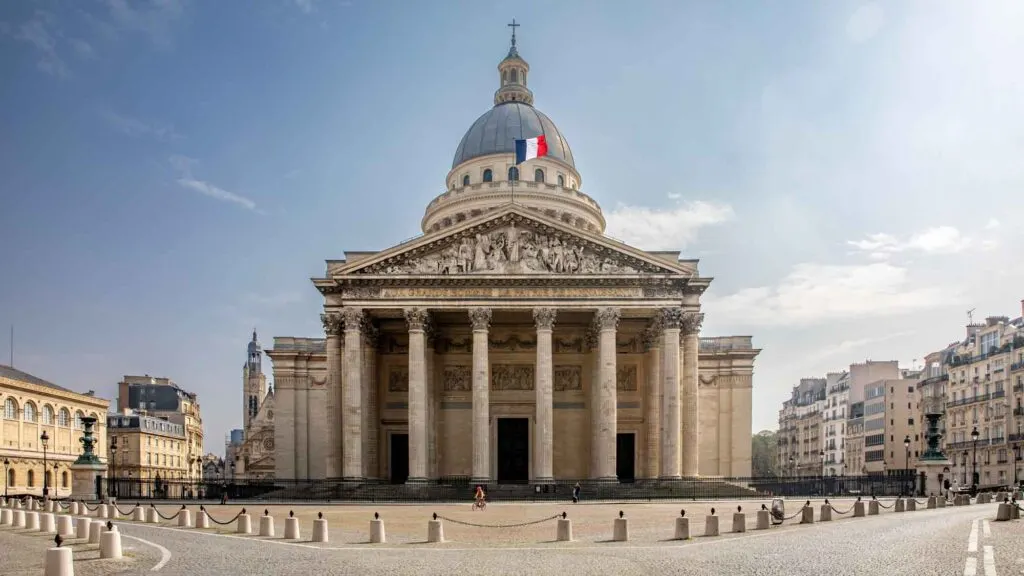
The Panthéon stands majestically with its towering spire and ancient Roman pillars at the center of the Latin Quarter.
Originally meant to be a church, it evolved into a civic building after the French Revolution and the final resting place for such notables as Rousseau, Voltaire, and Marie Curie.
Influenced by the Pantheon in Rome, it was designed in the neo-classical style by the famous architect Jacques-Germain Soufflot.
The interior exhibits frescoes and mosaics dedicated to Saint Geneviève, which describe different historical moments in French history.
For another fantastic view of Paris, climb the steep stairs to the dome for a unique panorama.
Tour Montparnasse
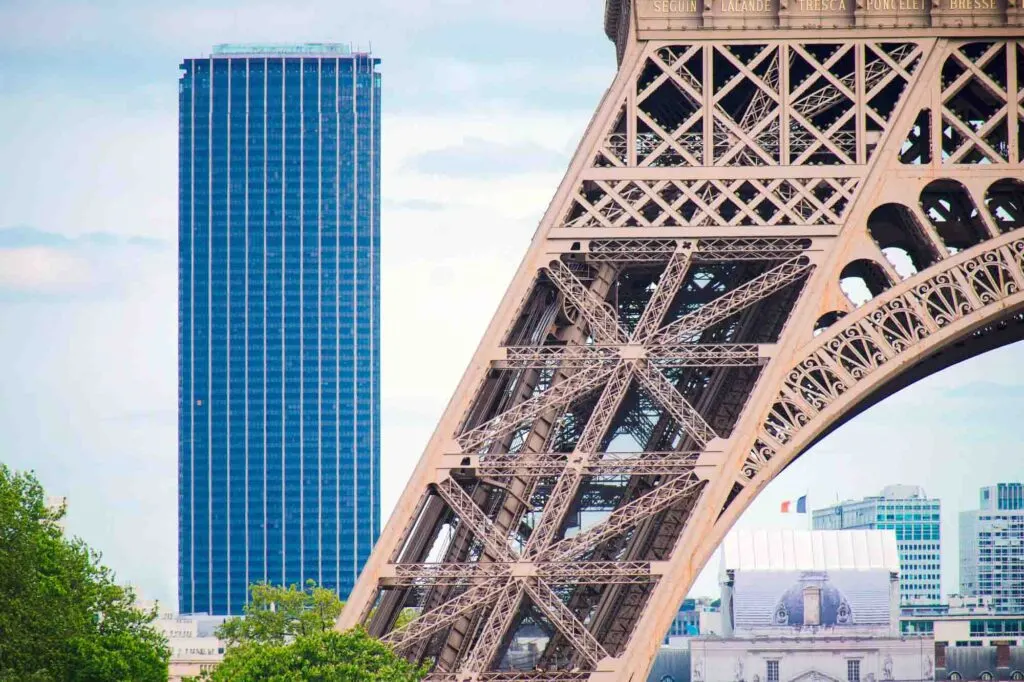
Paris’ only skyscraper, the Montparnasse Tower, is a 689 ft office building dominating a vibrant, historic neighborhood on the Left Bank.
Built between 1969 and 1973, the building caused considerable controversy with its bronzed glass exterior, extreme height, and stark steel structure.
Technically innovative at the time, the building is a complex of retail shops, offices, restaurants, and observatories.
At the top, you will find the highest open-air café in all of Paris, with live music and great food – picnic-style – during the summer months.
At night, the view from the Observation Deck is spectacular. Have a drink at the Champagne Bar on the 56th floor, and toast to all of Paris at sunset.
Palais Garnier
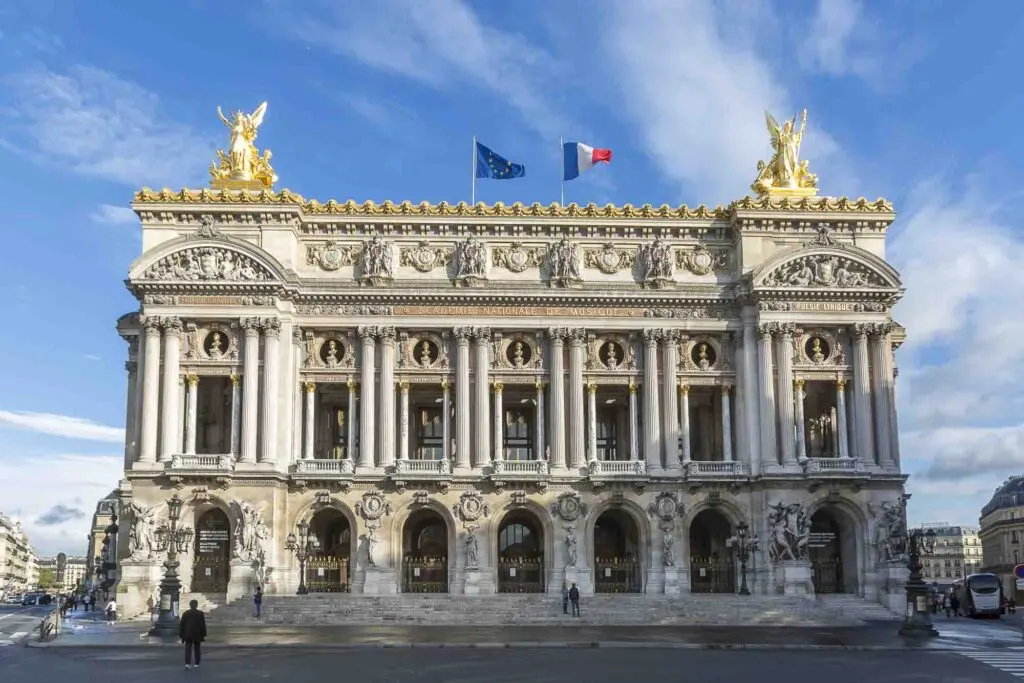
Also known as the Opéra Garnier, this magnificent theater in the 9th arrondissement was designed by Charles Garnier and commissioned for the performing arts by Emperor Napoleon III.
Home to the Paris Opera, it is designed in the highly decorative Baroque Revival architectural style, which proliferates extreme ornamentation and serves as the crown jewel of theaters in Paris.
The interior combines sculpture, architecture, and painting to create a grand entrance and lobby and includes a magnificent staircase, gilded embellishment, and rich red velvet upholstery – all examples of extraordinary luxury.
By contrast, Marc Chagall’s modern, abstract frescoes on the ceiling pay homage to composers and performers, but like many other innovative experiments in Paris, the “Chagall ceiling” has been met with controversy – even to this day.
If you cannot attend a performance at the Palais Garnier, a self-guided tour will reveal secrets and anecdotes, especially about the well-known Phantom of the Opera!
Final Words on Parisian Landmarks
Alas, you may never be able to visit all of the important Paris landmarks in one visit. Don’t even try!
Because once you have begun to appreciate the rich culture and history of the City of Light through these important monuments, you will be sure to return again and again.
Don’t Forget About Travel Insurance!
Before you leave for France, make sure you have a valid travel insurance policy because accidents happen on the road. We have been paying for Safety Wing travel insurance for a little over a year now, and we happily recommend them to our family and friends.
If you get sick, injured, or have your stuff stolen, you'll be happy to have the ability to pay for your medical bills or replace what was stolen.
Because, for just a couple of dollars a day (depending on how long your policy is for), you're going to get lots of things covered. Be smart and get travel insurance.
